The Complete Guide to Student Loan Refinancing

Table of Contents
What is Student Loan Refinancing?
Student loan refinancing is the act of replacing an existing student loan with a new loan, often with more favorable terms. These new terms can include a lower interest rate, which is the amount a lender charges to borrow the funds, a revised payment amount, and other key changes.
Loan refinancing is an opportunity to adjust your current loan terms and replace it with a loan that may be able to serve your financial needs better. This could include a shorter or longer payment term, or a change from a variable-interest rate to a fixed interest rate.
A variable-interest rate means that the interest charged on the loan can go up or down, depending on changes in the economy. The cost of a variable loan can change, sometimes monthly, quarterly, or annually, depending on the loan terms.
An interest rate is only one aspect of a loan. When you consider all elements, including a loan’s structure and other associated costs, you get the Annual Percentage Rate (APR). Think of APR as the actual cost of borrowing.

When is Student Loan Refinancing a Good Idea?
Refinancing can save you money… but are there other benefits? Yes!
Refinancing your student loan can be a smart financial move if it provides one or more of the following benefits:
- Customized payments: A new loan can offer a repayment plan that fits your monthly budget.
- Decreased total cost: Refinancing can help you secure a lower rate, which could mean thousands of dollars in interest saved over the term of the loan.
- Lower interest rate: Refinancing from a variable-rate loan to a fixed-interest loan means your monthly payment won’t change.
Average Refinance Rates
Many lenders offer refinancing with their own terms and conditions, for both fixed-rate and variable-rate loans.
As of 18 September 2025, student loan refinancing rates are running anywhere from 3.99% to 11.38%.
When reviewing any lender’s rates, it’s important to understand their full terms and conditions. Generally, the rates offered are not static—they can change—sometimes even daily. When discussing refinance rates with a prospective lender, confirm that the quoted rate is the same rate that will be applied to your refinanced loan upon approval.
When is Student Loan Refinancing a Bad Idea?
Refinancing is probably not the right choice if it does not provide a critical benefit, like lowering your monthly payment or reducing the total cost for the reminder of your loan’s life. Refinancing should improve your overall financial situation.
It’s also important to consider how refinancing will change your loan’s terms. Federal protections, such as income-driven repayment plans and loan forgiveness programs, can be incredibly valuable. If keeping these protections is important, refinancing may not make sense, as you may lose them.
Taking the time to consider all the pros and cons will help ensure refinancing works in your favor.
What is a Good Refinance Rate?
The current best rate is 3.99%, offered by RISLA, as of 16 September 2025.
It’s important to understand that each borrower will have a different perspective on what qualifies as a ‘good’ refinance rate, and each borrower will qualify for different rates. Still, there are some universal truths about refinancing that generally apply to everyone.
A good refinance rate should lower your student loan payment in a meaningful way while helping you reach a financial goal—whether that’s paying less interest overall, adjusting your loan term, or paying off your debt faster.
You should seek the best possible rate for your unique financial situation. Rates and terms will vary for each borrower depending on qualifications like income, credit score, and debt-to-income ratio (we will discuss these later). These qualifications will impact the rates and terms you’re offered… so how do you know if you have the best offer?
Research.
Research and compare lenders, understand their rates and terms, and ask questions.
Narrow down the lenders and compare their pros and cons. Does the lender have good reviews? Do they have a reputation for strong customer service? These are important factors to consider. Run the math and make sure your new rate achieves your goals.
So… who should you refinance with? Trick question! You have to find the best lender for your needs.
Don’t just take the first offer; shop around until you’re confident you’ve secured the best possible rate and loan terms.

Eligibility Requirements
All refinance lenders have their own unique eligibility requirements, which are the criteria that a borrower must meet to be eligible for a loan refinance with that specific lender.
Traditional Eligibility
Typically, traditional lenders will determine eligibility and build a refinance rate based on a borrower’s financial profile.
This can include:
- Credit history: A history of your credit usage, bill payment history and length of credit (how long you’ve used or maintained a line of credit).
- Stable income: Consistent income demonstrates the ability to make loan payments.
- Debt-to-income (DTI) ratio: Your monthly income before taxes (also called gross), compared against your monthly debts.
- Loan amount: The size of the loan you want to refinance.
- Degree status: The education levels you have completed.
- S. citizen/permanent resident status
- Loan type: Whether your loan is private or federal.
Traditional lenders may require a minimum credit score of 650 and a good debt-to-income ratio. As a general rule, a good debt-to-income ratio is 35%. For example, if someone earns $100,000 per year, their total debt should ideally be no more than $35,000.
The factors listed above help a lender determine if a borrower will be able to meet their loan’s payment obligations.
Do You Need a Cosigner?
Before we answer this question, let’s define what a cosigner is.
For any loan, a cosigner is a person who agrees to take legal responsibility for repaying it if the primary borrower fails to make the payments. Often, cosigners are parents, family members, or close friends.
During the loan application process, cosigners may need to provide information such as income and credit history, which can help the borrower qualify for or secure a lower interest rate.
Why is a Cosigner Necessary?
Whether a cosigner is required to refinance a loan is decided on a case-by-case basis, as each student loan refinance situation is unique. Lenders may require a cosigner if they feel the borrower doesn’t meet certain requirements, such as having a strong enough credit history, income, or debt-to-income ratio.
Federal vs. Private Loan Refinancing
Some of the most common questions borrowers ask are: ‘How do I know if my loan is federal or private?’ and ‘What are the pros and cons of refinancing each?’
The answers depend on where your loan originated and its current terms and conditions.
Federal Student Loans
If your loan was issued by the United States Department of Education, it is a federal student loan.
Federal loans are fixed-interest rate loans and have varying repayment plans, and in some cases, are eligible for loan forgiveness based on public service. Borrowers who work in certain professional roles, such as government employees or public school teachers, may qualify to have their loans discharged after a set term. This program is known as the Public Service Loan Forgiveness Program (PSLF), and it is only available for borrowers with federal loans.
The Department of Education does not refinance federal student loans. However, borrowers can choose to refinance their federal loans through a private lender, though there are potential pros and cons to consider:
Federal Student Loan Refinance
| Pros | Cons |
|---|---|
| Lower interest rate | Loss of Federal Payment Plans |
| Lower monthly payment | Loss of Public Service Loan Forgiveness |
| Cosigner release | Loss of generous forbearance/deferment |
Federal loans can be consolidated through the Direct Consolidation Loan Program, which merges multiple loans into one, consolidating multiple payments into a single monthly payment. The new consolidated interest rate is typically the weighted average of all the previous loans’ interest rates.
Refinancing vs. Consolidation
| Feature | Refinancing | Consolidation |
|---|---|---|
| Who Offers It | Private lenders | U.S. Department of Education |
| Loans Combined | Multiple private loans and sometimes federal loans | Multiple federal loans |
| Interest Rate | Fixed or variable; may be lower than your current loan | Weighted average of existing federal loans |
| Loan Forgiveness | Lost if federal loans are refinanced | Possible under certain programs (e.g., PSLF) |
| Repayment Plans | Determined by the lender | Federal repayment plans |
| Credit Check Required | Yes | No |
Private Student Loans
If your loan was issued by a lender like a bank, credit union, online lender, or a private entity, it is a private student loan.
Private student loans can have either a fixed-interest or variable-interest rate. They can also have varying repayment plans, loan terms and eligibility requirements.
Private student loans can also be consolidated, but not via the Direct Consolidation Loan Program (the federal program). A borrower can consolidate both federal and private student loans through a private lender. Like federal loans, there are some potential pros and cons of refinancing a private student loan:
Private Student Loan Refinance
| Pros | Cons |
|---|---|
| Lower interest rate | Eligibility requirements may be difficult |
| Lower monthly payment | Potential fees, such as an application fee |
| Cosigner release | Protections and hardship options differ from lender to lender |
| Switch from a variable-interest rate to a fixed-interest rate | Potential extension of the loan term |
Currently, Yrefy helps borrowers refinance delinquent and defaulted private student loans, even if they have bad credit. However, there are many other vendors who can assist with federal student loan refinancing. For more information on federal loan refinance, check out this article on Studentaid.gov.

Example Payments
Now that we understand the basics of student loan refinancing, let’s explore some examples of how it can improve a borrower’s financial stability.
To start, let’s look at a borrower with a fixed-interest loan. Remember, fixed interest means the loan’s monthly payment stays the same.
Let’s assume Borrower A has a fixed-interest rate of 11% on a 10-year loan. Using the table below, let’s pay special attention to how varying principal amounts and rates can impact monthly payments.
This is an example of how fixed-interest rates can change a payment; there are other factors that can change payment terms including but not limited to the loan term, the loan type, and APR.
| Loan Principal Amount | Interest Rate | Loan Repayment Term | Approximate Monthly Payment |
|---|---|---|---|
| $10,000 | 11% | 10 years | $137.75 |
| $20,000 | 11% | 10 years | $275.50 |
| $30,000 | 11% | 10 years | $413.50 |
| $40,000 | 11% | 10 years | $551.00 |
| $50,000 | 11% | 10 years | $688.75 |
| $60,000 | 11% | 10 years | $826.50 |
| $70,000 | 11% | 10 years | $964.25 |
| $80,000 | 11% | 10 years | $1,102.00 |
| $90,000 | 11% | 10 years | $1,239.75 |
| $100,000 | 11% | 10 years | $1,377.50 |
In this example, Borrower A had a very high interest rate, and as the principal amount increased, the monthly payment increased substantially. Now, let’s compare how that same borrower would fare had they refinanced their loan at a 4% fixed-interest rate.
| Loan Principal Amount | Interest Rate | Loan Repayment Term | Approximate Monthly Payment |
|---|---|---|---|
| $10,000 | 4% | 10 years | $101.25 |
| $20,000 | 4% | 10 years | $202.49 |
| $30,000 | 4% | 10 years | $303.74 |
| $40,000 | 4% | 10 years | $404.98 |
| $50,000 | 4% | 10 years | $506.23 |
| $60,000 | 4% | 10 years | $607.47 |
| $70,000 | 4% | 10 years | $708.72 |
| $80,000 | 4% | 10 years | $809.96 |
| $90,000 | 4% | 10 years | $911.21 |
| $100,000 | 4% | 10 years | $1,012.45 |
With a refinanced loan, Borrower A experienced significantly lower monthly payments even with higher principal amounts. Over the term of a loan, this means more principal paid off sooner and less interest paid overall (which is money saved!). In Borrower A’s case, refinancing was a fiscally strategic move that resulted in less cost per month and less debt over the term of the loan.
What About Borrowers with Variable-Rate Loans?
Let’s look at another example to see how a variable rate can impact a monthly student loan payment. Remember, a variable-interest rate is a rate that can change over time, even monthly. Variable-rate loans carry substantial risk due to a borrower’s inability to properly plan for the rise or fall in monthly costs.
Let’s assume Borrower B has a variable-interest loan of 3% on a 10-year term. Let’s also assume that the rate unexpectedly rises. For this example, we will focus on loan examples of $10,000 at varying rates.
| Loan Principal Amount | Interest Rate | Loan Repayment Term | Approximate Monthly Payment |
|---|---|---|---|
| $10,000 | 3% | 10 years | $96.11 |
| $10,000 | 4% | 10 years | $101.11 |
| $10,000 | 5% | 10 years | $106.07 |
| $10,000 | 6% | 10 years | $111.02 |
| $10,000 | 7% | 10 years | $115.92 |
| $10,000 | 8% | 10 years | $120.85 |
| $10,000 | 9% | 10 years | $125.79 |
| $10,000 | 10% | 10 years | $130.75 |
| $10,000 | 11% | 10 years | $135.73 |
| $10,000 | 12% | 10 years | $140.73 |
While Borrower B started with a low 3% interest rate, even a 1% increase caused their monthly payment to rise, from $96.11 at 3% to $101.11 at 4%. Additionally, as the rate increased, not only did the monthly payment increase, but less of each payment went toward principal, and overall, the interest costs grew.
Now, as mentioned, variable-rate loans can actually decrease in cost. However, in Borrower B’s case, refinancing to a fixed-interest loan would be a smart option for lowering monthly costs while also eliminating the uncertainty that can come with variable-rate loans.
How Can I Lower My Student Loan Payments?
If a your payments become difficult to manage, there are several methods for lowering it, depending on the loan type and your lender’s terms and conditions.
Common options include:
- Refinancing: Refinancing is a standard method for getting a new rate or loan term, which, as we saw above, can have significant impacts on monthly payments.
- Extending the loan term (federal loans only): Some federal loans can be spread over more years to lower a monthly payment, though this may increase total interest paid. This process is managed through an Income-Driven Repayment Plan (IDR).
- Requesting hardship support: Some lenders may allow modified payments due to financial hardship.
Understanding how each of these strategies affects both your monthly payments and overall costs is critical before making any changes.

Is Refinancing Worth It?
Refinancing a student loan can lower monthly payments, reduce interest costs, and relieve pressure from cosigners. However, every student loan is unique, and every borrower’s financial situation is different.
In general, refinancing is worth considering if it meets one or more of the conditions discussed earlier—provided you’re not giving up federal loan benefits you still want or need.
If a borrower is struggling with payments or has defaulted, then additional options, including refinancing, should be considered.
Refinance Frequency
You may be wondering, “Can’t I just keep refinancing my student loan to get better rates or terms?”
Student loans can be refinanced more than once, but there are some financial caveats to consider.
Each loan refinance requires qualifications, so a borrower could refinance as often as they qualify, but it may not always make financial sense. Remember, there can be upfront costs to refinancing which may take time to be offset by resulting savings. Most experts suggest waiting at least 12 months before refinancing a student loan, which would allow for meaningful interest savings to outweigh the costs.
How Do I Refinance?
Thankfully, the refinancing process is fairly straightforward.
- Complete an online application: Most lenders offer an online application which can usually be completed in just a few minutes. The application may request personal information such as your name, address and Social Security number, along with current income levels, loan details, and consent to perform a credit check.
- Wait for lender review: Following submission, lenders will review your information and prepare an offer, typically via email.
- Accept or reject the offer: Once approved, you can choose whether to accept the lender’s offer. If you accept, the new lender will pay off your existing loan. You are under no obligation to accept the offer.
- Begin payments with your new lender: Moving forward, all payments are made to the new lender under the agreed terms.
Yrefy’s Unique Advantage
At Yrefy, we offer unique advantages that help a broad range of borrowers qualify for student loan refinancing, even those with a credit score below 500. Our benefits include:
- Low fixed interest rates: Stable rates mean predictable monthly payments.
- Cosigner release: If you make on-time payments, your cosigner can get released from the loan.
- Flexible payment plans: We work with your budget.
- Default loan assistance: We can get you out of default and stop the collection calls.
Yrefy works with borrowers who have defaulted private student loans, and because our rates aren’t dependent on credit scores, we can proudly serve borrowers from all financial backgrounds.
These advantages, combined with our competitive interest rates, are why so many borrowers trust Yrefy to manage their student loan refinance.
Yrefy’s Eligibility
Yrefy’s eligibility requirements are unique among lenders, which is why we want to quickly highlight the differences.
We know that you are more than a number, and our approach to eligibility is not solely dependent on credit scores. In fact, many of our current borrowers were rejected by other lenders!
We take a holistic approach to eligibility, and can help struggling borrowers reduce their debt, create repayment plans that fit their budget, and save money through student loan refinancing.
Yrefy Interest Rates
Yrefy loans are fixed-interest rate loans ranging from 1% to 5.99%.
| Yrefy Rates | 1% to 5.99% |
|---|---|
| Market Rates | 3.99% to 11%+ |
Remember, our loans are fixed, so your interest rate will not change. Yrefy does not charge an application fee, nor do we charge penalties for early repayments. New loans will incur a loan origination fee, which is added to the loan’s balance.
How to Start
If you are thinking about a defaulted private student loan refinance, our experts would love to speak with you for a no-pressure discussion of how Yrefy can help your financial future.
Applicants can either visit our homepage and fill out the online form or they can call our experts directly at (877) 609-7238. Due to high demand, we recommend calling us directly if you need immediate service or a rate quote.
Don’t forget, at Yrefy, you are more than a number. We know the student loan journey can be difficult and we’d love to make it better for you.
Testimonials
We take pride in the care we provide to our customers, which is why we’ve received such positive reviews. Want to see what others are saying about Yrefy? Take a look at our testimonials page to see real reviews from real borrowers.









